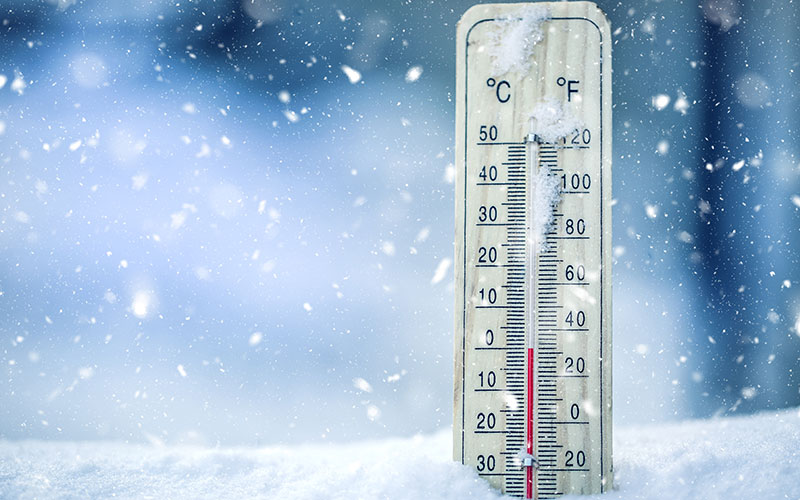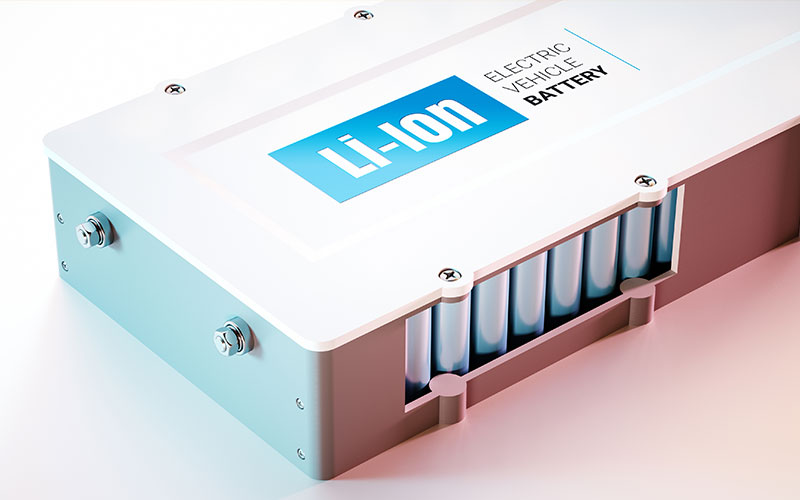In less than ideal weather, EV range can suffer. Here’s what you need to know to get the most out of your EV when the mercury dips.
Range Anxiety

Among the major hurdles to broad electric vehicle adoption is range anxiety (nascent infrastructure and cost being others). For most in-town driving and commuting, range anxiety isn’t really an issue. But on longer highway trips, with charging stations few between in some regions of the country, it’s wise to keep an eye on your remaining charge. This is true in perfect weather conditions. Add in extreme temperatures and your worries about range get worse.
Below we’ll explain how weather affects EV ranges, provide some context, and some ways to increase your range in bitter cold or stifling heat.
Cold Weather

Cold temperatures make greater and greater demands on your EV’s batteries as the mercury plummets. While cold does affect battery chemistry (making the electrolyte in lithium ion batteries more viscous) this usually has a greater impact on cold weather charging than it does on energy output. What actually saps your EV’s range in the winter is the increased demand on your batteries from your HVAC system trying to keep you warm.
Unlike internal combustion engines, EVs can’t just harvest warmth from a hot engine to help heat the cabin. Instead, EVs feature one of three heating systems. The first is resistance heating which resembles your traditional space heater with an electrically heated element that then heats air which is then sent to the cabin. Resistance heaters aren’t terribly efficient from an energy perspective. More efficient is a PTC or positive temperature coefficient system which uses an electrical current pulled through a heating element. A heat pump system transfers heat using a refrigerant system kind-of like an AC unit in reverse. Heat pumps systems are more energy efficient but less effective, especially at very low temperatures.

So how badly does cold weather affect an EV’s range? Depending on just how cold it is, the loss in range can be significant. An AAA study found that the average EV lost 12 percent of its range at 20° F. Not so bad, right? Not quite, that’s without turning on the heat. When you to that range dropped by 41 percent. Another study from the Idaho National Laboratory found similar, if less dramatic results, with an average range reduction of 25 percent at 20° F. Importantly, these losses also scale downward as the temperature decreases. Subzero temperatures can sap half of an EV’s range.
Hot Weather

High temperatures also affect EV ranges, albeit less dramatically so. At a temperature of 95° F, with the air conditioning on an EV typically sees a range reduction of 15-17 percent.
As technology in this area evolves, EVs will better be able to contend with high heat environments. EV batteries typically feature one of three cooling systems. A passive cooling system uses air vented on to the battery pack. This has the benefit of being energy efficient but isn’t especially effective at high temperatures. An active cooling system uses a fan or series of fans to move air over the battery pack to cool it. This method can better modulate battery temperature but uses energy in the process. A liquid cooling system is basically a refrigeration system keeping the battery cool. These are the most effective but also the most expensive, complicated, and heavy.
EVs vs ICEs

Yes, extreme temperatures, especially cold ones, negatively affect an EV’s range. But the cold isn’t kind to traditional internal combustion engine (ICE) cars either. A regular gas car loses anywhere from 10-20 percent of its efficiency in 20° weather. And if you’re making frequent short trips that call for heating the cabin, that loss of efficiency on a per mile basis is closing in on the same impacts for an EV. (Necessary caveat here: ICE efficiency losses aren’t compounded as dramatically by super low temperatures as in their EV counterparts.)
In hot weather, an ICE has an even harder time than an EV in keep itself and the cabin cool. The EPA estimates an ICE on short summer trims can lose up to 25 percent efficiency to AC usage. Pro Tip: Rolling your windows down can help on low speed trips while increasing drag, and lowering efficiency, at high speeds.
It’s important to also note that the temperature issues of EVs are also present in plug-in hybrids. But PHEVs have the benefit of an internal combustion engine to ease any worries if a cold snap reduces your all-electric range.
How to Increase EV Range

There are a few ways that you can blunt the negative effects of extreme weather on an EV’s range.
- Preconditioning: Most EVs have a preconditioning feature that will either heat or cool the battery to its optimal temperature prior to driving. This is most cost effective if you do this while charging to draw power from the grid rather than the battery pack itself. This goes double for running the heat in the cabin since it’s much easier from an energy perspective to maintain a certain temperature than it is to heat the cabin itself.
- Avoid high speed driving: We all know driving faster requires more energy. Recall that the national 55 mph speed limit of the 1970s was introduced in response to the Oil Crisis to save gas, though fewer fatal crashes were a nice knock-on effect. The difference between even 75 and 80 mph is as much as 5 percent efficiency in ICE cars. Since a lot of this is thanks to increased drag, expect similar effects when driving an EV.
- Use Economy Mode: Most EVs feature an economy mode that will limit speed, HVAC, and other power draws in order to increase range. If you’re really worried about making it to the next charger use economy mode.

- Limit the weight of the vehicle: The more weight, the more energy needed to move it. Leave the kids and/or the mother-in-law at home and you’ll have plenty of range.
- Air up your tires: In cold temperatures your tires lose some of their pressure. Over the winter, make sure to check and refill your tires to optimize your EV’s efficiency.
- Limit accessory use: Heaters, AC, infotainment, lights all use energy. Driving during the day to limit the need for headlights, making use of heated seats and steering wheels, and preheating the car while it’s plugged in can all help preserve your charge.
- Park in a garage: Keeping your car in a temperature-controlled garage will make getting the cabin and battery to the right temperature much easier and more efficient.
Coming Soon, Better Batteries

Yes, EVs can struggle in extremely cold temperatures. But I’m willing to bet Tesla sales in Alaska aren’t great to begin with. As battery technology improves, much of the negative impacts of cold and hot temperatures on battery performance will be mitigated. The prospect of solid-state batteries looks to eliminate the current gap between EVs and ICEs when it comes to extreme weather performance.









